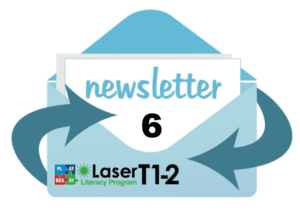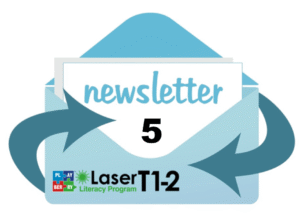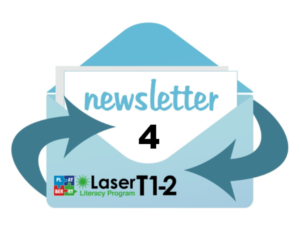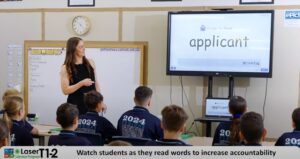What are Rosenshine's Principles of Instruction?

Bill Hansberry
Co-Director Playberry Laser
Barak Rosenshine, an American educational psychologist, developed Rosenshine’s Principles of Instruction. His principles are based on empirical research and observations of effective teaching practices. These principles aim to provide teachers with a framework for effective instructional strategies. Rosenshine began work in the 1970s and 1980s, conducting studies and synthesising research findings on effective teaching methods. His work culminated in identifying principles that he observed to be present in successful classrooms.
Rosenshine’s Principles of Instruction have gained momentum, prompting us all to consider whether our teaching is compatible with human cognitive architecture. Their common sense and simplicity strike anyone who reads them. Rosenshine’s Principles provide a clear roadmap for improving students’ retention and application of what we teach them.
Rosenshine’s Principles of Instruction reflect fundamental elements that have stood the test of time and are rooted in the foundations of successful teaching practices. For me, Rosenshine’s principles are highly congruent with the methodologies for teaching individuals with dyslexia developed by Samuel Orton and Anna Gillingham in the 1920s. The enduring nature of these effective teaching principles underscores that regardless of educational advancements and evolving methodologies, certain fundamental elements of excellent instruction remain constant.
Over this series of posts, I will lay out each of Roshenshine’s ten principles as outlined in an article Rosenshine wrote for American Educator in the Spring of 2012 and elaborate slightly on each of these, bringing some of my thoughts and insights to them, particularly in how they relate to how many of us in the evidence-informed teaching of literacy space have relearned to teach structured literacy lessons and how this explicit and routine heavy teaching has successfully spilt into other curriculum areas. I want to show how we’ve been adhering to these principles of instruction all along.
Principle 5: Guide student practice: Successful teachers spend more time guiding students’ practice of new material.
“Research Findings
It’s not enough simply to present students with new material because the material will be forgotten unless there is sufficient rehearsal. An important finding from information-processing research is that students need to spend additional time rephrasing, elaborating and summarising new material in order to store this material in their long-term memory… (Rosenshine)
Rehearsal makes it easier for our brains to retrieve information. When we learn something new that we have little background knowledge of, our initial practice (retrieval) attempts of that new learning are difficult and error-prone. Retrieving and using the newly learned information will feel like finding our way across a grassy field in thick fog. Retrieval is like walking the same way over and over. Eventually, our faint, barely visible footmarks become light spots of flattened grass. With even more trips along that path (retrievals), we’ll form an unmistakable, well-worn path where the grass no longer grows. This is analogous to how the brain creates neural pathways for retrieving information from long-term memory; the well-worn pathways (the ones that get used often) become stronger. Because the brain operates on a use it or lose it principle, the less retrieved information paths become overgrown again, like we’ve never been there – the neural path is abandoned and disconnected by the brain. The information has been forgotten.
Teachers can ensure that retrieval of learned information becomes strong by asking good questions that make students retrieve, think about, (reminiscent of my mentor Alison saying, “You have to get them to think”) and reorganise information. Teachers must carefully listen and give feedback on the quality of student responses to ensure no misconceptions are being rehearsed (students haven’t strayed from the path).
One study cited by Rosenshine found that successful maths teachers spent more time presenting new material and guiding students as they practised, providing extra explanations and examples when necessary, checking for understanding and watching for misconceptions. The less successful teachers spent less time presenting new learning, used fewer explanations and set students working on practice questions earlier. Students made more errors and, consequently, needed to be retaught.
More successful teachers presented less information at a time. They deliberately guided student practice, starting with full-worked examples (as students observed), explaining as they went. They asked students to attempt parts of practice questions and even explain their thinking aloud to the class. The most successful teachers spent more time in this guided practice (we do) phase, asking more questions, checking that students understood. They then tasked students with identical or near identical questions (you do) to practice under close teacher guidance. With more time teaching and more guided practice, students were ready to attempt independent practice and made fewer errors than students who received less time being taught, were asked fewer questions and spent less time in guided practice.
Within this framework, teaching is finer-grained and contains multiple explanations. Students are released to independent practice gradually and become free to practice independently only when the teacher is confident that students understand what has been taught and are not making errors. This idea of gradually freeing students to independent practice is known as the gradual release of responsibility model. It was first developed by Pearson and Gallagher in the 1980s and was expanded by Fisher and Frey.
Playberry Laser T1-2 is a teacher-supportive multisensory literacy resource for primary teachers to support their teaching in line with research. We’ve taken the planning and resource design load to free teachers to focus on building content knowledge and sharpening their delivery in line with Rosenshine’s Principles of Instruction.
Reference:
Rosenshine, B. (2012). Principles of instruction: Research-based strategies that all teachers should know. [online] American Educator, American Educator, pp.12–39. Available at: https://www.aft.org/sites/default/files/periodicals/Rosenshine.pdf.






